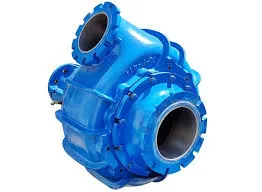English
- Afrikaans
- Albanian
- Amharic
- Arabic
- Armenian
- Azerbaijani
- Basque
- Belarusian
- Bengali
- Bosnian
- Bulgarian
- Catalan
- Cebuano
- Corsican
- Croatian
- Czech
- Danish
- Dutch
- English
- Esperanto
- Estonian
- Finnish
- French
- Frisian
- Galician
- Georgian
- German
- Greek
- Gujarati
- Haitian Creole
- hausa
- hawaiian
- Hebrew
- Hindi
- Miao
- Hungarian
- Icelandic
- igbo
- Indonesian
- irish
- Italian
- Japanese
- Javanese
- Kannada
- kazakh
- Khmer
- Rwandese
- Korean
- Kurdish
- Kyrgyz
- Lao
- Latin
- Latvian
- Lithuanian
- Luxembourgish
- Macedonian
- Malgashi
- Malay
- Malayalam
- Maltese
- Maori
- Marathi
- Mongolian
- Myanmar
- Nepali
- Norwegian
- Norwegian
- Occitan
- Pashto
- Persian
- Polish
- Portuguese
- Punjabi
- Romanian
- Russian
- Samoan
- Scottish Gaelic
- Serbian
- Sesotho
- Shona
- Sindhi
- Sinhala
- Slovak
- Slovenian
- Somali
- Spanish
- Sundanese
- Swahili
- Swedish
- Tagalog
- Tajik
- Tamil
- Tatar
- Telugu
- Thai
- Turkish
- Turkmen
- Ukrainian
- Urdu
- Uighur
- Uzbek
- Vietnamese
- Welsh
- Bantu
- Yiddish
- Yoruba
- Zulu
Telephone: +86 13120555503
Email: frank@cypump.com
Jul . 31, 2024 02:48 Back to list
Understanding the Differences Between Sump Pumps and Ejector Pumps for Effective Home Drainage Solutions
Understanding Sump Pumps and Ejector Pumps
When it comes to managing water and wastewater in residential and commercial settings, sump pumps and ejector pumps play crucial roles. These devices protect properties from flooding and ensure proper sewage disposal, making them vital components of modern plumbing systems.
What is a Sump Pump?
A sump pump is primarily used to remove excess water that accumulates in a sump basin, often found in the basement or crawl space of a building. The main function of a sump pump is to prevent flooding and water damage by pumping out water that may seep in due to heavy rainfall, melting snow, or rising groundwater levels.
Sump pumps are typically activated by a float switch, which detects when the water level in the sump pit rises to a certain point. Once activated, the pump begins to work, pushing the water up and out through a discharge pipe, directing it away from the foundation of the building. There are primarily two types of sump pumps submersible and pedestal pumps. Submersible pumps are placed within the sump pit, while pedestal pumps are located above the pit, with a long shaft extending down into the water.
What is an Ejector Pump?
Ejector pumps, on the other hand, are designed specifically for removing wastewater from areas where gravity alone cannot effectively transport it to a sewer or septic system. Commonly found in basement bathrooms or other locations where plumbing fixtures are lower than the main sewage line, ejector pumps work by pushing waste and wastewater upwards through pipes to ensure proper disposal.
sump pump ejector pump

Ejector pumps typically consist of a motor-driven impeller that creates pressure to push the waste out. Similar to sump pumps, ejector pumps often feature a float switch that activates the pump when wastewater reaches a certain level. Ejector pumps are essential for homes lacking a gravity-based sewage system, as they allow for proper sanitation and wastewater management.
Choosing Between Sump and Ejector Pumps
The choice between a sump pump and an ejector pump largely depends on your specific needs and the layout of your property. If your primary concern is managing groundwater and preventing basement flooding, a sump pump may be all you need. However, if you have plumbing fixtures located below the level of the sewer line, an ejector pump becomes necessary to safely discharge wastewater.
When selecting a sump or ejector pump, it's crucial to consider the pump's capacity, the volume of water it needs to handle, and the potential head height, which is the vertical distance the pump must push the water. These factors will help determine the right pump for effective water management in your property.
Maintenance and Considerations
Regular maintenance is essential to ensure that both sump and ejector pumps function correctly. This includes checking the float switch for proper operation, cleaning the sump pit to prevent debris buildup, and testing the pump periodically by pouring water into the basin. In addition, installing a backup power source, such as a battery backup for your sump pump, can provide extra protection during power outages.
In conclusion, sump pumps and ejector pumps are indispensable tools for managing water and wastewater in various environments. Understanding their functions and applications can help you choose the right system for your property, providing peace of mind against flooding and ensuring proper waste disposal. Proper maintenance and timely service can maximize their efficiency, ensuring they perform well when needed the most.
-
ISG Series Vertical Pipeline Pump - Chi Yuan Pumps Co., LTD.|Advanced Hydraulic Design&Energy-Efficient Solutions
NewsJul.30,2025
-
ISG Series Vertical Pipeline Pump - Chi Yuan Pumps Co., LTD.
NewsJul.30,2025
-
ISG Series Vertical Pipeline Pump - Chi Yuan Pumps Co., LTD.|energy-efficient fluid handling&industrial durability
NewsJul.30,2025
-
ISG Series Vertical Pipeline Pump - Chi Yuan Pumps | Advanced Engineering&Industrial Efficiency
NewsJul.30,2025
-
ISG Series Pipeline Pump - Chi Yuan Pumps | High Efficiency, Energy Saving
NewsJul.30,2025
-
ISG Series Vertical Pipeline Pump-Chi Yuan Pumps|High Efficiency&Reliable Performance
NewsJul.29,2025










